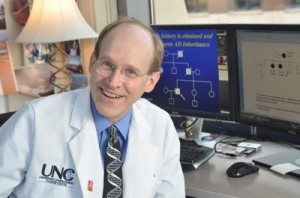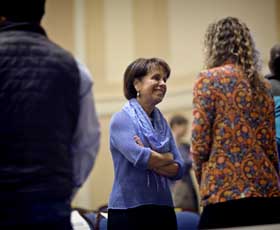RENCI is all about partnerships. Our software developers, engineers, data and computing specialists team with researchers to give them the technologies and cyberinfrastructure they need to continue important work and launch new projects.
Such was the case with REALTROMINS, a medical device startup launched by a Keith Kocis, an MD in the department of pediatrics at UNC’s School of Medicine, and his brother Daniel Kocis, Jr., PhD. REALTROMINS (which stands for REAL-Time Risk Of Mortality and INStability) set out to help the most vulnerable of medical patients: critically ill infants the pediatric intensive care unit and children’s cardiac care unit at UNC Children’s Hospital.

Back in 2007, when the company was brand new and RENCI was a relatively new resource for research teams, Keith Kocis lauched a partnership with RENCI to help develop his idea into a commercially viable product. RENCI researchers worked with the company for several years to develop new technologies for capturing, managing, integrating, analyzing, and visualizing vast amounts of real-time data gathered from hospital monitors. The idea was to give doctors and nurses a system for easily assessing an infant’s condition, including overall trends that can indicate whether the infant’s condition is improving or deteriorating.
Using this tool, the REALTROMINS founders hoped that caregivers would be able to quickly respond to changes and realign their treatment plans to maximize an infant’s chance of survival.
RENCI helped the company develop the cyberinfrastructure needed for its product, and then moved on. That’s generally how it works here. We give our partners tools they need and probably couldn’t develop themselves, and then we let them run with them. I often want to check in with former partners and find out if their work is still on track, but I rarely have the time to do so. That’s why it was good to hear from Keith Kocis recently and learn that REALTROMINS is thriving and has just announced two new devices, one for assessing critically ill newborns and one for hospitalized children outside the ICU. The company now works with IBM, using its InfoSphere Streams technology in continued development.
Congratulations to REALTROMINS on this important new technology with the potential to save lives. And a round of applause to UNC’s Kenan Flagler Business School and the Office of Technology Development for helping the Kocis’ turn a good idea into a viable company. This is truly a partnership that paid off for RENCI, and demonstrates the real-world value of UNC research.
Read more about it at the REALTROMINS website.





